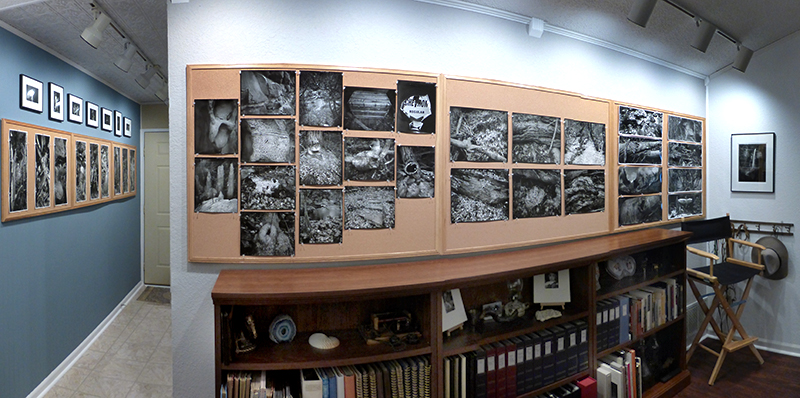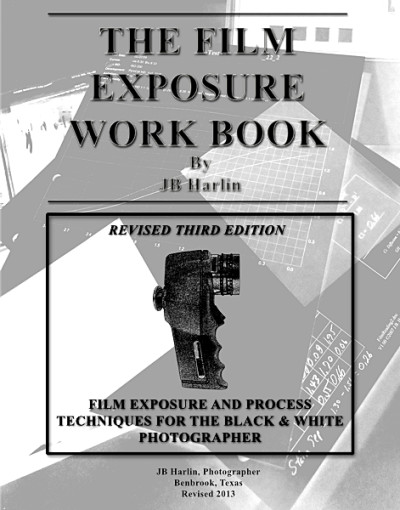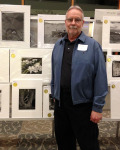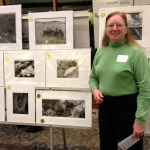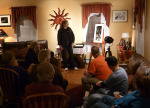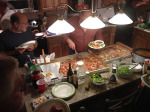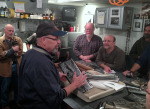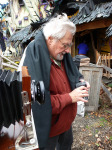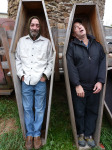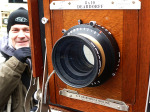Commentary
PYRO DEVELOPERS; SUBTLE YET DIFFERENT
When you go into your darkroom year after year and print your negatives, you slowly become acutely aware of the most minute changes in image quality. It’s this intimate contact with your craft and subject that allows you to see the minute changes that the materials and process make. The prints you made in years past may now seem to be lacking. Even those negatives you were never quite able to interpret into a suitable finished image may somehow come alive when you apply new wisdom and technique. Everything in the chain of events, from the camera to the finished photograph can and will make a difference. Some can make a vast amount of difference; others can be very small. Yet they all add together in the finished print.
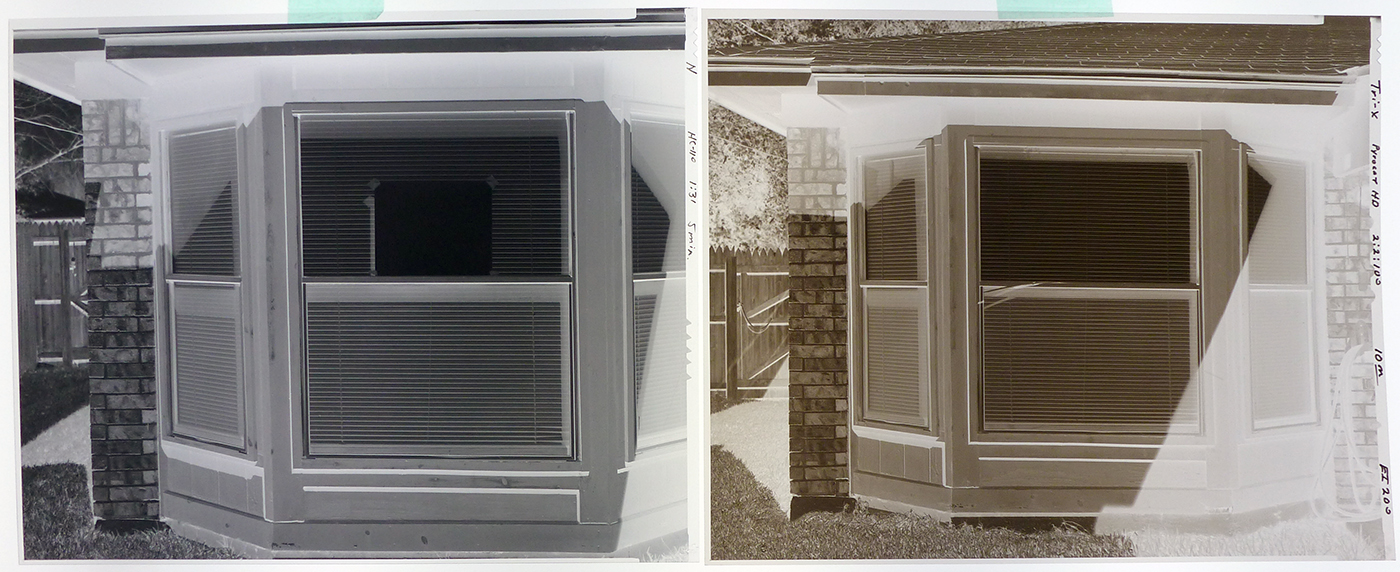 When we first started working with Pyro developers it took some time to realize exactly how the different look and feel of the film would translate into the finished print. There are those that say there is no difference between different film developers. They may also say there is no difference in the film you choose. That is like saying there is no difference between Ford and Chevy; no difference between red or white wine. Maybe for some this may be the case. But for those that take the time to really look and absorb the image, there is always a difference. Fred Picker said, “different is not the same!”
When we first started working with Pyro developers it took some time to realize exactly how the different look and feel of the film would translate into the finished print. There are those that say there is no difference between different film developers. They may also say there is no difference in the film you choose. That is like saying there is no difference between Ford and Chevy; no difference between red or white wine. Maybe for some this may be the case. But for those that take the time to really look and absorb the image, there is always a difference. Fred Picker said, “different is not the same!”
Never let the opinion of someone else dictate your choices; either in life or photographically. You need to prove all things for yourself. Never fall prey to hearsay. Test everything for yourself. If you feel the need to explore Pyro developers, by all means take the time to do your own testing. To really know, you have to find the answers for yourself. A quick dabble will not do. You need to establish your personal film speed and developing time. Then go out and make photographs in the real world. And not just a few photographs, but a lot; over time; test; adjust as needed. Give yourself at least a years worth of real photography. Then you will have enough experience to make a really personal and informed decision.
Is there a real difference in a Pyro film developer? This is a question you will have to answer for yourself. Just do not fall into the trap of depending on someone else to make the decision for you. Pyro was good enough for Edward Weston, Morley Baer and many others. If we could only ask them their opinion.
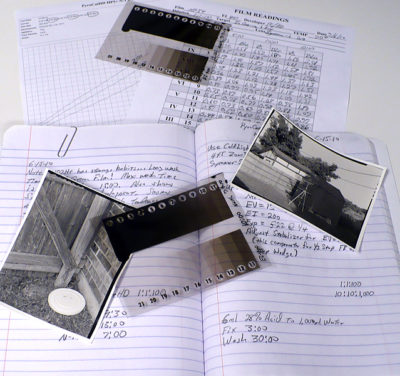 Over the past 20 or so years Pyro film developers have again become popular, with modern reformulations for modern film. John Wimberley, Gordon Hutchings, Sandy King, Jay DeFehr, among others, have done a lot of research and have formulated numerous reincarnations of Pyro film developers, specifically designed for use with modern film. Steve Sherman, Bob Herbst, Michael A. Smith and Steve Simmons have written extensively about Pyro developers and their unique qualities. Susan and I have made our choice based on our own real world experiences. We join with the many others that are also Pyro developer users.
Over the past 20 or so years Pyro film developers have again become popular, with modern reformulations for modern film. John Wimberley, Gordon Hutchings, Sandy King, Jay DeFehr, among others, have done a lot of research and have formulated numerous reincarnations of Pyro film developers, specifically designed for use with modern film. Steve Sherman, Bob Herbst, Michael A. Smith and Steve Simmons have written extensively about Pyro developers and their unique qualities. Susan and I have made our choice based on our own real world experiences. We join with the many others that are also Pyro developer users.
Print Your Legacy – John Sexton
I believe that every photographer, regardless of your skill level, chosen format or commitment to the medium, should watch this and listen carefully to what John Sexton has to say.
You can find more videos from other photographers on the Epson Print Your Legacy web site.
All I can add is: Don’t forget to Make Prints!
JB Harlin
TRANSPARENT TECHNIQUE
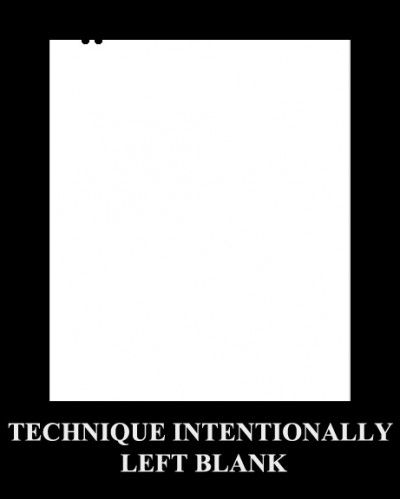 “It is a truism that the more skillful the photograph, the more invisible the art of creation. If the photographer had done a competent job, his insights become so lucid, universal and accessible that they seem to belong to the observer of his work. What follows, then, is the assumption that the viewer could have produced the work. This, in spite of all evidence to the contrary, is why the myth endures that the photographer merely pulls out a picture as a dentist extracts a tooth.”
“It is a truism that the more skillful the photograph, the more invisible the art of creation. If the photographer had done a competent job, his insights become so lucid, universal and accessible that they seem to belong to the observer of his work. What follows, then, is the assumption that the viewer could have produced the work. This, in spite of all evidence to the contrary, is why the myth endures that the photographer merely pulls out a picture as a dentist extracts a tooth.”
ZONE VI NEWSLETTER by Fred Picker, Number 45, December, 1985, p.8
I believe that people think I must spend most of my time building and testing. It is true that I do spend time in my shop building and modifying equipment. I spend a lot of time in the darkroom testing and experimenting with the photographic process. But believe me, I only do what is necessary to make my images say what I want. It is about finding what works, and making it work the way I want. I like to think of the technique as being transparent. I do not want the process to get in the way when I am out working. I want to concentrate, without distraction, as much of my working time as possible on my subject. I do not want to be distracted with the process.
We have had very few malfunctions on the road with the equipment. I attribute that to being aware, and up to date with keeping everything in proper operating condition well before we head out. Most problems we have had in the field are minor, mostly adjustment related and are taken care of once we return home. We do spend a lot of time in preparation for a long photography trip. Details are worked out well before we leave. Everything from a detailed calendar, hotel reservations, cleaning and testing equipment, loading film holders, even down to a packing check list. But that is all part of good planning.
This is what must be done before hand to help insure your creativity once in the field. You have to get all of the technical stuff out of the way. That is where you start. Learn the process. . . make it your own and do not let it get in the way of your creativity. Get all of the logistics organized and out of the way. Your technique should be as transparent as possible.
JB
NOTE: If you have a set of the ZONE VI NEWSLETTER by Fred Picker, read Number 45, December, 1985, for an interesting discussion of the art of photography. Also, I have an index available for download. Follow this LINK to our Articles area, scroll down the page and look for the “COMPLETE ZONE VI NEWSLETTER INDEX ISSUES #1 THROUGH #83.”
DO YOU LIVE WITH YOUR PRINTS?
It is always fascinating to see your finished photographs hanging in an exhibition space. Mounted, matted, framed and properly lit, they always make me ask myself, did I really do that? This is what fine art photography is all about. It is not about the camera, the film, the tripod, the developer. . . it is all about that finished photograph. Do you really care what brand of saw or chisel was used to craft a piece of fine furniture?
In today’s world of here today, gone in five minutes (or less), it seems people do not appreciate, nor are they particularly interested in long-term anything. Quickly snap a selfie, post it to social media, laugh and move quickly to the next nothing. No one prints photographs anymore. We are losing that engagement that comes from holding a printed image in our hands. . . or enjoying it on the wall for days, years or a lifetime. But, as usual, I have strayed way off topic and begun to ramble.
The print is what photography is all about. I wish I could make more prints from the negatives I have, but it is a difficult task to make fine prints. I find that I have to be in the right mindset to print. If I cannot clear my mind and concentrate on printing, it is nothing but an effort in futility. I would venture to say that I print, at best, 10% of the film I shoot. I find that after printing for several weeks off and on, that I need to take a break and look at what I have done.
During the printing process, I really don’t take a lot of time to really deeply look at what I am doing. I have selected the negative that I believe will make an image that I will like. I have studied it carefully, made my best selection and feel the content of the negative is sufficient to warrant printing. At this point I am in darkroom mode; involved in the process of shape, form, light and texture. I have a good idea of what I want in the print and I am absorbed in the process of coaxing everything I can from that finished print. But do I really look at the print? Not in a sense of seeing what is there. . . not in a sense of living within the finished photograph. That comes later. I am concentrating on getting the print done and making sure the process is completed as it should be.
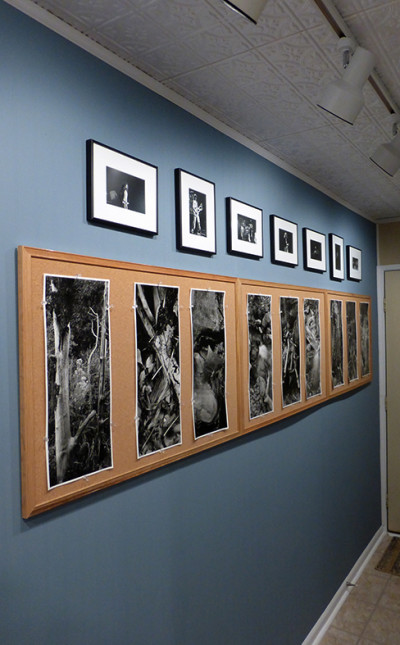
Days later, maybe even weeks later, once the print is dry and flattened, then I really get to study what I have done. I can shuck away all that technical chatter and look objectively at the print. . . and only the print and its contents. I like to look at the finished images and study them carefully for flaws, or mistakes I made in the darkroom. I look carefully at the photograph and if I am happy with what I see, it is time to move to the next step.
This is where Living With The Print begins. We have two large cork boards illuminated with track lighting just for this purpose. I like to pin up my finished images and look at them. . . on the wall. . . under proper illumination. . . for an extended period of time. How long? Weeks; maybe multiple weeks; depends on many factors. My wife and I both put our finished prints up and look at them. . . over some amount of time. After a while it becomes obvious if something is not right. Maybe the composition is just not acceptable; then discard the print, go back and try making another negative. Maybe the printing is not what it could be; go back to the darkroom and print it again. Maybe it just doesn’t work at all; discard the print and try something else.
These are all choices you have to make on your own. It is up to you to determine whether your photograph is exactly what you want; or does it miss the mark? Should it be reprinted; or should the entire idea be abandoned? Sometimes, older negatives that didn’t make it the first time can be reprinted years later and make a more than suitable finished print. You change. . .your vision changes. . . your skills as a printer change. . . or your idea of what you want to express may change. Never say never!
The important thing is to Live With Your Photographs. . . that way you will know if you have been able to say what you want with your hard-earned finished work.
JB
WHY COMPLAIN SO MUCH?
 It seems that I hear a lot of bellyaching about this or that when discussing getting out with a view camera. I wish it really were that easy, but working with large cameras and sheet film is not something that is trivial nor easy. Here are a few complaints I have heard;
It seems that I hear a lot of bellyaching about this or that when discussing getting out with a view camera. I wish it really were that easy, but working with large cameras and sheet film is not something that is trivial nor easy. Here are a few complaints I have heard;
-
My dark cloth is not dark enough
-
My dark cloth is too heavy
-
My ground glass is not bright enough
-
I want one of those inverting viewers
-
My lens is not exactly the one I want
-
My camera is not sturdy enough
-
My tripod is too heavy
-
It is way too hot (that one is mine)<
-
It is way too cold (not for me)
It is much too easy to complain rather than to just suck it up and get to work. Nothing is ever perfect and if you really want to get out and expose film, you will learn to work with whatever you have, in whatever conditions may occur. I believe most of this is more about using complaints as an excuse not to get out and make photographs as it is about reality. As I said, making photographs is difficult hard work, especially with a large view camera. It requires dedication and a stick-to-it kind of mindset.
Let me address some of these items from my viewpoint;
-
I have never had a dark cloth that wasn’t dark enough. If the cloth is black on the inside and relatively thick it is plenty good enough to see your ground glass. The main purpose of the dark cloth is to cancel any light and reflections on the ground glass so you can see to compose and focus. It will seldom be cave dark if you are out in bright sun. Quit looking at how bright it is and concentrate on the ground glass.
-
Yes, if you have a 100% opaque dark cloth, then the odds are it will be heavy and even cumbersome to use. May not always be the case, but everything is a trade off.
-
The ground glass is not a computer screen. . . it will never be as bright as a TV or computer screen. In my experience everything I have tried makes things worse for me. I tried a Fresnel. . . once. . . not for me. Yes it was brighter, but the lines broke the image up to the point I could not easily focus. I got rid of it and learned to use what I had. I prefer a plain ground glass. I have learned to use it. Remember to let your eyes get accustomed to the dark when you get under the dark cloth. The longer you stay under there the better you will see. Be patient.
-
I have said this before and I will repeat; nothing will improve your composition any more than looking at your subject upside down. This is a fact. . . get used to it. . . use it to your advantage. . . it is true!
-
Don’t go there. . . optimally you need, a short, a medium, and a long focal length lens. If you can’t afford all three, compromise and learn to use what you have till you can afford something else. Not a good excuse.
-
Everything in a mechanical design is a tradeoff. The lighter and smaller your camera folds, the less sturdy it will be. . . fact of life. Remember: The camera only has to be still when the shutter is open!
-
Tripods are another tradeoff. Light tripod; less sturdy, more prone to vibration. Heavy tripod: more sturdy, less prone to vibration. You get to choose. Me, I carry a 19 pound wooden tripod for 8×10 and 11×14. I wouldn’t use anything else.
-
This is my worst area. So far as I am concerned, when it gets to 80F, it is way too hot for humans to function. Working with a large camera, I begin to draw the line at 50F. And, I am not going to get over it! Being sick and suffering heat exhaustion is not a fun time, nor is it creative.
-
Too cold. . . what is that? I prefer to work well under 40F. We have worked at near 0F and survived. My rule; if I break a sweat, time to head home. See, I also whine!
Nothing is ever perfect and the lack of perfection is not an excuse for not making photographs. You can always find some reason not to get out, how about finding something worth exposing a sheet of film on instead of complaining? When I wrote this it was the middle of July, 103.8F, with a dew point of 62F on the back porch. I don’t even want to look outside, let alone go outside in this kind of weather. I have whittled my list of complaints and excuses down to hot weather. . . how about you?
JB
I have never had a dark cloth that wasn’t dark enough. If the cloth is black on the inside and relatively thick it is plenty good enough to see your ground glass. The main purpose of the dark cloth is to cancel any light and reflections on the ground glass so you can see to compose and focus. It will seldom be cave dark if you are out in bright sun. Quit looking at how bright it is and concentrate on the ground glass.
Yes, if you have a 100% opaque dark cloth, then the odds are it will be heavy and even cumbersome to use. May not always be the case, but everything is a trade off.
The ground glass is not a computer screen. . . it will never be as bright as a TV or computer screen. In my experience everything I have tried makes things worse for me. I tried a Fresnel. . . once. . . not for me. Yes it was brighter, but the lines broke the image up to the point I could not easily focus. I got rid of it and learned to use what I had. I prefer a plain ground glass. I have learned to use it. Remember to let your eyes get accustomed to the dark when you get under the dark cloth. The longer you stay under there the better you will see. Be patient.
I have said this before and I will repeat; nothing will improve your composition any more than looking at your subject upside down. This is a fact. . . get used to it. . . use it to your advantage. . . it is true!
Don’t go there. . . optimally you need, a short, a medium, and a long focal length lens. If you can’t afford all three, compromise and learn to use what you have till you can afford something else. Not a good excuse.
Everything in a mechanical design is a tradeoff. The lighter and smaller your camera folds, the less sturdy it will be. . . fact of life. Remember: The camera only has to be still when the shutter is open!
Tripods are another tradeoff. Light tripod; less sturdy, more prone to vibration. Heavy tripod: more sturdy, less prone to vibration. You get to choose. Me, I carry a 19 pound wooden tripod for 8×10 and 11×14. I wouldn’t use anything else.
This is my worst area. So far as I am concerned, when it gets to 80F, it is way too hot for humans to function. Working with a large camera, I begin to draw the line at 50F. And, I am not going to get over it! Being sick and suffering heat exhaustion is not a fun time, nor is it creative.
Too cold. . . what is that? I prefer to work well under 40F. We have worked at near 0F and survived. My rule; if I break a sweat, time to head home. See, I also whine!
Nothing is ever perfect and the lack of perfection is not an excuse for not making photographs. You can always find some reason not to get out, how about finding something worth exposing a sheet of film on instead of complaining? When I wrote this it was the middle of July, 103.8F, with a dew point of 62F on the back porch. I don’t even want to look outside, let alone go outside in this kind of weather. I have whittled my list of complaints and excuses down to hot weather. . . how about you?
JB
LOOK, FEEL, PRESENCE & NUMBERS
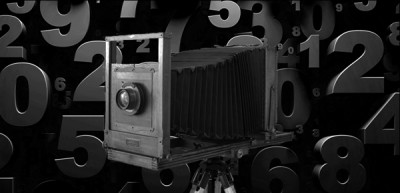 Numbers can not quantify a feeling. . .
Numbers can not quantify a feeling. . .
A fine photograph has A LOOK; A FEEL; A PRESENCE; there are qualities that cannot be measured or codified. They are seen and felt, yet have no tangible attributes. . . some things are impossible to put into words. You can run tests, plot curves, generate computer models, but the emotional response, if any, to a photograph is an experience and not a quantifiable known.
In the process of making the fine photograph there are subtle adjustments that the photographer literally pours into the image. These fine adjustments may actually not even be perceivable to the viewer, but they make or break the finished image.
In the creative process of making a finished print, there are no hard and fast rules. There are photographs that take on a completely different atmosphere than may have been seen or felt at the time the film was exposed. These are those “happy little accidents” as the painter Bob Ross would say. You may follow one direction you believe will make the image speak when in the field, which is totally abandoned in the darkroom at the time of printing. You make your best estimate as to what you believe you will eventually end up with, but you will not absolutely KNOW for sure what a film, paper, developer combination is really doing until you make a real photograph. It is all about that feeling. Do not allow yourself to get locked into any preconception. Allow your creativity to guide you. Do not get hung up on numbers or any hard and fast rules.
I keep coming back to the same point; you can not calculate feeling. There are some things that just exist and are not possible to be explained by a mathematical expression. . . they are emotional expressions. . . emotional responses. . . subject to any number of personal preferences of the individual. . . these preferences are the product of what make each person an individual. . . you cannot measure these things. . . they are subjective. Think about it. . . can art really be created and expressed by numbers???
It is about personal taste. . . Ford or Chevy. . . Coke or Pepsi. . . red or blue. . . one size does not fit all. What you may find perfectly acceptable in a film developer combination may not suit my taste at all. My father used to say, “that is why they paint cars different colors.”
Keep in mind that any hard rules or numbers are only a starting point. . . only a suggestion. Creativity comes from reaching far beyond hard figures and rules. The creative spark reveals the inner feeling by stirring the imagination with creativity.
JB
OVER 25 YEARS OF MPD & STILL GOING
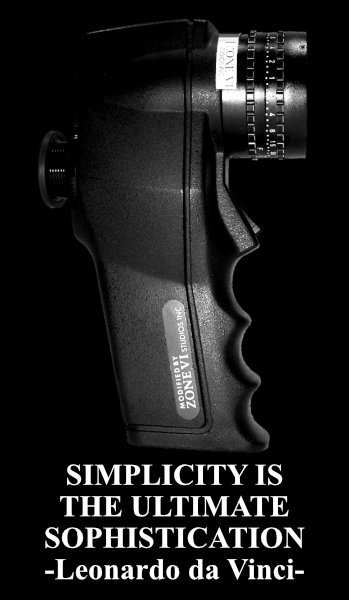 Seems everyone has their favorite method for exposing and developing film. You do shoot film, don’t you? If not, you should! But I digress for sure. . . There are as many ways of working with film as there are opinions. . . maybe more. None are better or worse than any other, if they work; if they give you the results you insist on within your own vision, then you are already there. But, in this day and age there are a lot of people coming into photography and just now discovering film and the traditional darkroom. In the beginning film is a mystery and requires some time to begin to master. Of course, the most important thing is that you shoot film and make finished photographs. How you get there is a very personal thing and you need to choose what works best for you. But, you have to start somewhere.
Seems everyone has their favorite method for exposing and developing film. You do shoot film, don’t you? If not, you should! But I digress for sure. . . There are as many ways of working with film as there are opinions. . . maybe more. None are better or worse than any other, if they work; if they give you the results you insist on within your own vision, then you are already there. But, in this day and age there are a lot of people coming into photography and just now discovering film and the traditional darkroom. In the beginning film is a mystery and requires some time to begin to master. Of course, the most important thing is that you shoot film and make finished photographs. How you get there is a very personal thing and you need to choose what works best for you. But, you have to start somewhere.
For me, I prefer simplicity when I am out making photographs. I do not want to get bogged down with a lot of complexity. I struggled with film exposure and development, like I would speculate that most everyone has when they first start out trying to understand film photography. It was way back in the mid 1970’s when I realized I could process and print my own photographs. This was a big deal for me. It started a lifetime involvement with photography and the wet darkroom.
I stumbled around, trying this and that looking for that magic technique that would give me a negative that would print what I saw in my mind’s eye in the finished print. I read everything I could find on the subject. I even toyed with the idea of becoming a strict Zone System practitioner. Thing was, everything I looked into was just way too complicated. There had to be a simpler way. . . at least, that is what I thought.
Somewhere in the 1980’s I discovered Fred Picker and his “Zone VI Workshop” book. This was exactly what I was looking for. It made sense and contained a simple approach that I found worked! Having found someone that was also into simplicity, I subscribed to the Zone VI Newsletter. I remember really getting excited when I discovered the latest issue in the mailbox. Plenty of opinion and advice that really made sense. To this day I still have my complete set of these newsletters. About 25 years ago when I seriously decided to start working with large format photography, I read the entire set again. . . three times. . . every issue, #1 through #83.
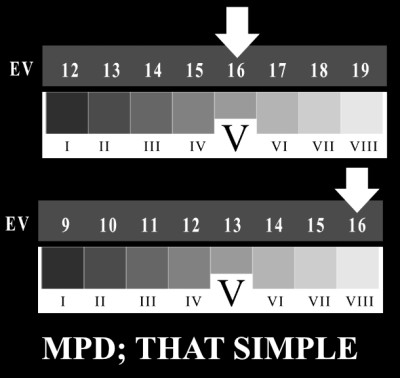
I had experimented previously with what Fred called MPD (Maximum Printable Density) back in my early days in photography. I had very good results, but I drifted away from the darkroom for a while to concentrate on a career. When I moved back into photography after a brief hiatus, I dove right into large format. I needed to relearn my darkroom skills, at least to the point where I had left off and establish a sound working technique.
MPD is such a simple approach to exposing film that most think it will not work. It is deceptively simple for sure! I did some experimenting to get back into the groove and continue my experiments with simplicity. I found that MPD was just what it claims to be. . . SIMPLE. . . and well-suited for any film format! I am a big fan of ‘simple’ for sure. As with anything, it is ludicrous to use something that does not work. Why make it worse on yourself. I approached MPD with the idea, that as long as it works, I will use it.
It is funny how there are things that just seem to fit you and continue to do so. It has been over 25 years now and I still use MPD. Why? Because it works! My wife uses it and she is sold on the idea of simplicity also. If you have seen any of our original prints from LF negatives, you have seen film exposed using MPD.
Oh, guess I forgot to mention exactly how simple MPD is in practical use. Here goes, don’t blink; 1. Find your subject, compose as you wish. Not much new there. But, here it comes. 2. Meter the area you wish to render as a Zone VIII. White painted wall, snow, sand. . . whatever you wish to print as finely textured white (Zone VIII). Meter that area. 3. Open up three stops, or place the reading on Zone VIII if your meter has a Zone Dial. 4. Set your exposure and expose the film.
It is actually even easier than that;
1. Meter
2. Place VIII
3. Expose. . . DONE!
Now, don’t believe this is a haphazard way of working. First, you must do your film testing. You need to establish your working EI (Exposure Index) and your normal (N) developing time. You need to establish a proper proofing regiment. Your proper proofs are your control. They tell you just how you are doing with film exposure and developing. Study your proper proofs and make fine adjustments on the fly. Thing is, once you find a starting point, things get much easier. You do not have to engage in never-ending testing. Test once. . . find that starting point. As Fred Picker said, “Get one foot on a rock.” Then you use your proper proofs for fine tuning and a constant check on how you are doing. Simple!
Are you interested in making really good negatives? Want to understand proper proofing, personal film speed and developing times? How about getting started using MPD? Interested in getting the technical stuff behind you?
I was asked how to use MPD and what testing was necessary years ago. I wrote “THE FILM EXPOSURE WORK BOOK” specifically for those interested in learning where to start. This 44 page book is now available for download in e-book format from our online store. You will learn how to establish your working EI. Determine your N and N+1 1/2 developing times. Proper Proofing is covered and much more. You will also get a printable 12 page Work Sheet to record your testing results.
Is MPD right for you? If you are just starting out with film, it just might be if you are interested in a simple, reliable method for making the best possible negatives. Fred Picker had a large rubber stamp that said TRY IT. He used it to answer letters people wrote to him asking questions. You will only know if you TRY IT. It has worked well here for over 25 years!
JB
THE NEW jbhphoto.com WEB SITE IS UP
It has been a very busy start to 2015 for us here at Harlin Photography World Headquarters. We returned from our annual trip out West the first week of January and have not had time to look up since. We had a lot of film to process and thankfully, that is about done now. Susan is already printing new film and JB is almost done proofing and filing.
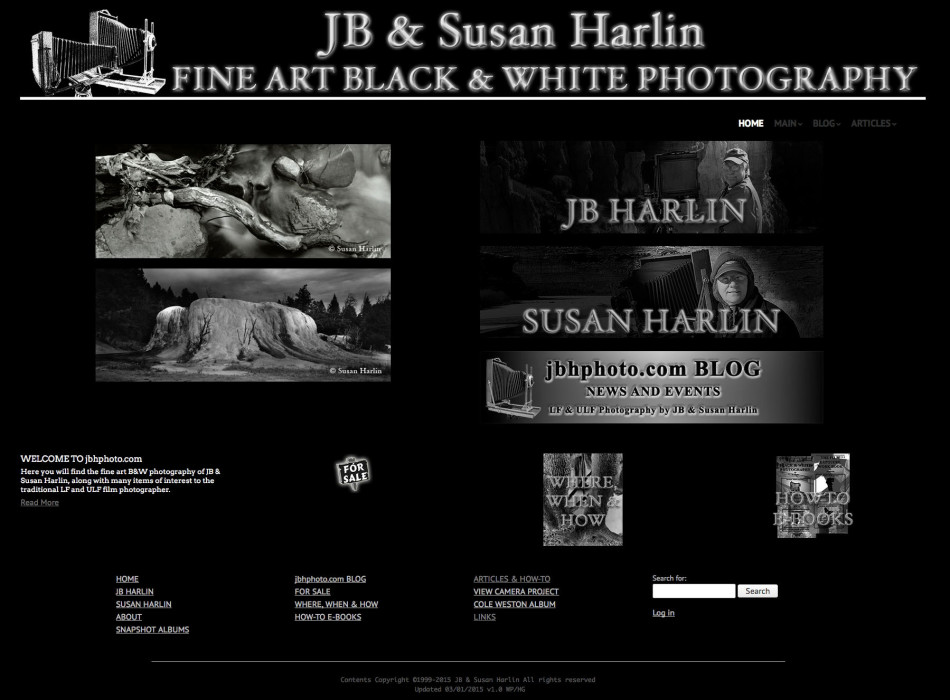 One project we have wanted to tackle for several years now has been an upgrade to a more user-friendly, modern-look for our web site. The site has been in continuous operation since 1999 and has gone through numerous upgrades over the years. We have continually added more and more content, so it is no small task to rebuild a site that has this much subject matter, but it needed to be done.
One project we have wanted to tackle for several years now has been an upgrade to a more user-friendly, modern-look for our web site. The site has been in continuous operation since 1999 and has gone through numerous upgrades over the years. We have continually added more and more content, so it is no small task to rebuild a site that has this much subject matter, but it needed to be done.
We really wanted to start on this last year, but there just wasn’t enough time. This year the web site project was moved to near the top of the list and it is finally a done deal! JB has been hacking on WordPress code, off and on, since early January and has finally finished the site with a completely new look. We have even moved to new web hosting for the delivery of the updated jbhphoto.com web site.
We have rebuilt all of the Snapshot Albums. The Cole Weston Workshop album was completely rebuilt and the original photographs have all been rescanned. The Articles and View Camera Project areas have been updated and revised. JB and Susan each have new areas with updated galleries of their work. We have updated the menu structure for easier navigation and access to content. The entire site has a new look using a customized theme that we feel is much more pleasing, up to date and much easier to navigate.
We would like to invite everyone to stop by and take a look at our new web site. . .www.jbhphoto.com
Always, thanks for your support!
JB & Susan
PS After the move to new web hosting and due to many instances of spammers registering, we have removed all registered users to this BLOG. If you were previously registered and receiving email notifications, we are truly sorry. . . don’t blame us, blame the spammers! You will need to subscribe to this BLOG to receive email notifications again when new posts are added. If you would like to Subscribe to the jbhphoto.com BLOG for email notifications, click on the SUBSCRIBE link in the top navigation menu under INFO, or in the bottom left menu. Follow the instructions on the Subscribe Page.
NELFPC. . . FINE ART PHOTOGRAPHY AT ITS BEST!
 We have just returned from the NELFPC 2014 fundraiser and amazing photography weekend. Susan and I were extremely excited to be invited to participate in this year’s activities in Connecticut. The New England Large Format Photography Collective (NELFPC) is an amazing group of the most dedicated photographers I have ever met. This is truly THE model for any other similar organization to take a very close look into. Rather than trying to explain further, let me quote from their web site;
We have just returned from the NELFPC 2014 fundraiser and amazing photography weekend. Susan and I were extremely excited to be invited to participate in this year’s activities in Connecticut. The New England Large Format Photography Collective (NELFPC) is an amazing group of the most dedicated photographers I have ever met. This is truly THE model for any other similar organization to take a very close look into. Rather than trying to explain further, let me quote from their web site;
The New England Large Format Photography Collective formed from a small but diverse group of photographers in October of 2003 to advance the craft of traditional photography and educate others on its traditional processes. We embrace those with a passion for large format photography, and strive to provide inspiration for others practicing our craft.
We believe Large Format photographers are unique people using unique processes to create the highest quality prints. Simply stated, if you derive considerable enjoyment while viewing something “upside down and backwards” in the dark you are unique! We wish to network with others who embrace this oddity.
For more information on NELFPC, take a look at their Mission Statement.
This is such a diverse and talented group. . . and I might add a light hearted, fun-loving bunch of really great people. Trying to explain exactly how enlightening this experience was is difficult to put into words. To be in the midst of so much beautiful photography, dedicated photographers and so much photographic talk, made this a truly inspiring event.
We began Thursday evening with a fundraiser, “Photographers Fighting Cancer.” This is a fine art event to benefit the Middlesex Hospital Cancer Center and is hosted by NELFPC at the Valentine H. Zahn Community Gallery located at the Middlesex Hospital Shoreline Medical Center. There were 80 Large Format photographs by 30+ LF photographers up for bids. Susan and I were proud to each donate one of our prints to this worthy organization and this was a really fun evening that was to kick off a long weekend of more and more photography.
- JB & his print
- Fine Art Photographs at the benefit
- Susan & her print
After the fundraiser it was off to Steve and Vicky’s, our hosts for the weekend, home for a meet and greet with all of the members of The Collective. I got to put faces with numerous names I have seen and exchanged discussions with via the Internet over the years. The LF community is truly a large and dispersed group, and we are all fortunate to be connected by our love of the medium, if only via the magic of the ether. Getting to meet many of those people in person is an amazing experience in itself. The amount of talent, knowledge and dedication to the photographic process within this group is amazing.
- Lloyd showing work
- JB showing work
- Susan showing work
What followed, starting early Friday morning and continuing until well into the afternoon Sunday, was an intense immersion into the world of fine art photography. Everyone brought photographs to share. Steve and Vicky treated us like royalty. . . outstanding food. . . great refreshments. . . we had access to Steve’s amazing darkroom for demonstrations. . . and did I mention photographs. . . lots of photographs. Each day was spent viewing each other’s work. Susan and I brought about 30 prints each to show. I did two KeyNote presentations, one on pyro developers and the other on how we travel for 30 days at a time with all those cameras. Paul did a talk on collecting photography and Steve did a very informative darkroom demonstration on split toning. We also had two field trips giving everyone a chance to break out the cameras and make a few large format photographs at two interesting locations.
- Great food
- In the darkroom
- Steve; split toning demo
- Jack; Sunday field trip
- Lloyd & Bob posing
- Jim & his Cooke Triple Convertible
Now it is all over, we are home and we have had time to absorb all that took place, believe me it went like a flash, I just can’t get over the dedication and talent contained within The Collective. The amount of energy they put into their work and their organization is inspirational. Only those that have been involved in such an endeavor can understand just how much time, thought and support it takes to put on such an event. Steve did a bang up job on the schedule and was really on the ball in keeping things moving and on time. The hospitality was second to none. . . the food outstanding. . . and. . . did I mention the refreshments?
I know I keep repeating myself, but the NELFPC is really a model for any group wanting to promote and sustain the art and craft of fine art photography. Susan and I cannot express how much fun we had and how honored we are to have been a part of this year’s gathering of the NELFPC. We would like to express our deepest heart-felt thanks to Steve and Vicky for opening their home to everyone for this truly amazing event, and everyone in The Collective, for your generous hospitality and such a great time!
The only regret I have is that we do not have this kind of a dedicated group here locally. . . it sure is a long way to Connecticut!
JB
. . . and Susan endorses these comments!


